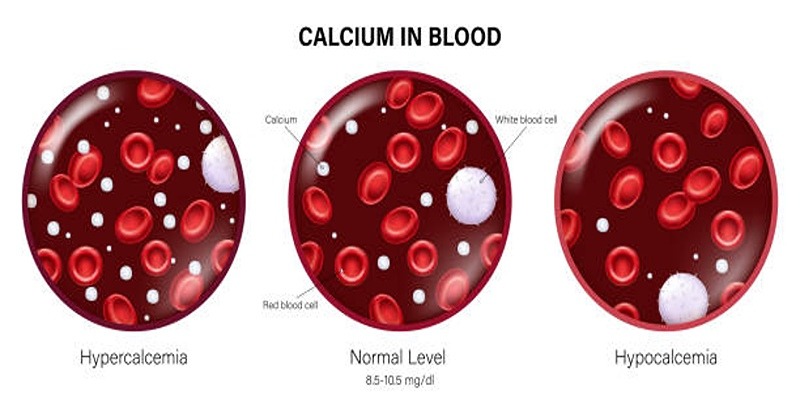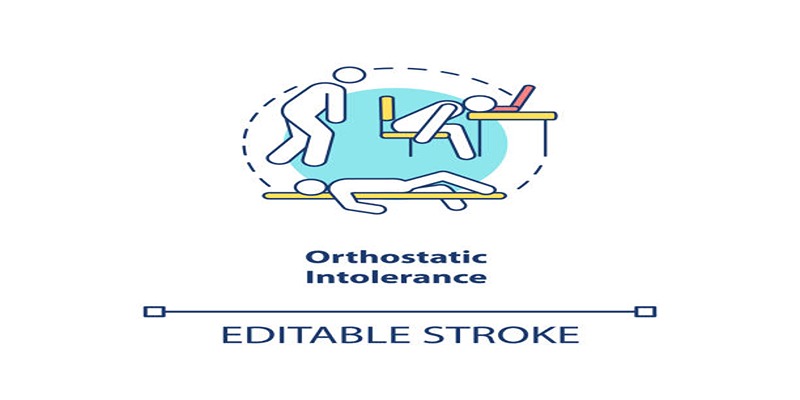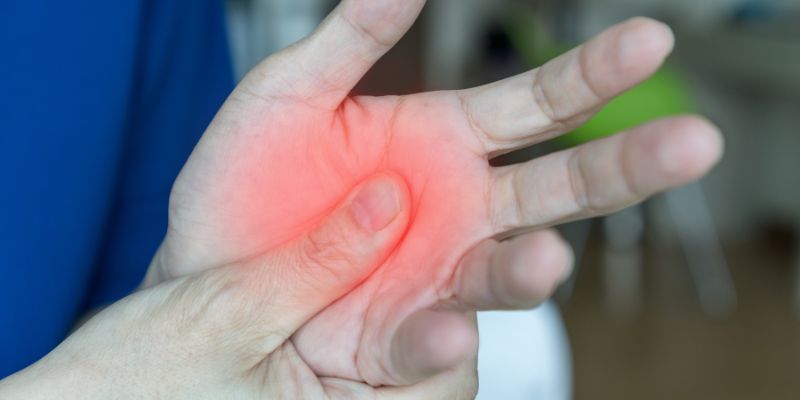Top 10 Common Causes of Orthostatic Intolerance
Orthostatic intolerance (OI) is a condition that occurs when the body has difficulty regulating blood pressure and blood flow upon standing, leading to symptoms such as dizziness, lightheadedness, blurred vision, or even fainting. It is often linked to the body’s inability to properly adjust to gravity’s effect on circulation when moving to an upright position. OI is not a single disorder but rather an umbrella term that encompasses various underlying causes and conditions. Understanding the common causes of orthostatic intolerance is essential for accurate diagnosis and management.
1. Postural Orthostatic Tachycardia Syndrome (POTS)
Postural Orthostatic Tachycardia Syndrome (POTS) is one of the most well-known forms of orthostatic intolerance, affecting the body’s ability to adjust to changes in posture. It is defined by a significant increase in heart rate—typically 30 beats per minute or more upon standing—without a corresponding drop in blood pressure. POTS can trigger a variety of debilitating symptoms, including extreme fatigue, brain fog that hampers memory and focus, uncomfortable heart palpitations, and dizziness that disrupts daily life.
Many individuals also report feeling faint or struggling with exercise intolerance. POTS predominantly affects young adults, with women making up nearly 80% of cases, according to research.
2. Dehydration
Dehydration is another more conventional but equally avoidable cause of orthostatic intolerance. It happens when the total body composition loses more volume than what is taken in mainly because of poor water intake, or profuse sweating, vomiting, diarrheoa, or through disease associated with fever. Blood volumes in the body reduces due to dehydration, and this makes the circulation of blood to be compromised particularly with respect to postural alterations needed when seated.
This may cause dizziness, light headed feelings, fainting spells especially when getting up from a sitting position. Prolonged lack of sufficient water supply only adds to the problems the body has in maintaining circulation and blood flow to the brain thus aggravating orthostatic intolerance.
3. Neurological Conditions
Certain neurological disorders can significantly affect the autonomic nervous system, impairing its ability to regulate blood pressure and heart rate during postural changes, such as moving from sitting or lying down to standing. Conditions like autonomic neuropathy, which damages the nerves that manage involuntary bodily functions, and Parkinson's disease, a progressive neurodegenerative disorder, are commonly linked to orthostatic intolerance.
These issues occur because the autonomic nervous system may fail to constrict blood vessels or increase heart rate adequately to counteract the effects of gravity. As a result, symptoms such as dizziness, fainting, and a heightened risk of falls can arise. Additionally, individuals with these conditions may face related challenges, including trouble regulating body temperature and digestive complications.
4. Medications
Orthostatic intolerance can also result as a side effect of medications that influence blood pressure or cardiovascular function. For instance, diuretics, often prescribed to manage fluid retention or high blood pressure, can excessively reduce blood volume, making it difficult for the body to maintain steady blood pressure when transitioning to an upright position. Similarly, blood pressure medications like beta-blockers may lower blood pressure too much, leading to dizziness or fainting.
Antidepressants and antipsychotics, which work by altering brain chemistry to treat mental health conditions, can further disrupt the body’s ability to adjust to positional changes. These medications may suppress the natural responses of the nervous system, worsening symptoms of orthostatic intolerance.
5. Anemia
Anemia is a condition marked by a shortage of red blood cells or low hemoglobin levels, which diminishes the blood’s ability to deliver oxygen throughout the body. This lack of oxygen can make standing for long periods particularly difficult, as the body requires increased oxygen to sustain proper circulation in an upright position. Common symptoms of anemia include fatigue, dizziness, weakness, and shortness of breath, all of which can make daily activities more challenging.
While iron deficiency is a leading cause of anemia, it can also result from chronic illnesses, vitamin deficiencies, or blood loss. Accurate diagnosis and appropriate treatment—whether through dietary adjustments, iron supplements, or addressing underlying health issues—are crucial for relieving anemia-related orthostatic intolerance and improving overall well-being.
6. Chronic Fatigue Syndrome (CFS)
Chronic Fatigue Syndrome (CFS), also referred to as Myalgic Encephalomyelitis (ME), is a complex and often debilitating condition closely linked to orthostatic intolerance. Those with CFS frequently experience a worsening of symptoms when standing upright, a phenomenon known as postural intolerance. Hallmark symptoms include profound fatigue that is unrelieved by rest, dizziness, heart palpitations, and cognitive difficulties often described as brain fog.
Many individuals with CFS struggle to stand for extended periods, finding relief only by sitting or lying down. While the precise connection between CFS and orthostatic intolerance remains unclear, autonomic dysfunction, where the nervous system fails to properly regulate blood pressure and heart rate is thought to play a key role.
7. Cardiovascular Conditions
Certain heart conditions, such as heart failure, arrhythmias, or valve disorders, can play a significant role in orthostatic intolerance. These conditions impair the heart's ability to pump blood efficiently, particularly during the transition from sitting or lying down to standing. As a result, blood flow to the brain is often reduced, triggering symptoms like dizziness, lightheadedness, or fainting.
In some cases, the body’s natural compensatory responses such as increasing heart rate or constricting blood vessels fail to function properly, exacerbating these symptoms. Effective management of underlying cardiac conditions is essential.
8.Adrenal Insufficiency
Adrenal insufficiency occurs when the adrenal glands do not produce enough of the hormones cortisol and aldosterone, which are critical for maintaining blood pressure, managing stress, and balancing fluids in the body. Without adequate levels of these hormones, the body struggles to stabilize blood pressure, particularly during the transition to an upright position, leading to orthostatic hypotension. This issue becomes even more pronounced during periods of stress, illness, or dehydration, which place additional strain on the system.
Symptoms often include fatigue, dizziness, nausea, and fainting. Accurate and timely diagnosis typically through blood tests and imaging is crucial. Treatment involves hormone replacement therapy and careful monitoring to address symptoms and prevent further complications.
9. Diabetes
When poorly managed, diabetes can lead to long-term damage to the autonomic nervous system, known as diabetic autonomic neuropathy. This condition disrupts the regulation of blood pressure and heart rate, often resulting in orthostatic intolerance. Common symptoms include dizziness, fainting, and difficulty adapting to sudden position changes.
Additionally, diabetes-related dehydration caused by frequent urination or high blood sugar levels can worsen these issues. Left untreated, the condition can significantly diminish quality of life.
10.Prolonged Bed Rest or Immobility

Extended bed rest or prolonged immobility—whether due to illness, injury, or a sedentary lifestyle can weaken the cardiovascular system, muscles, and autonomic nervous system. This physical deconditioning reduces the body’s ability to adjust to standing or upright positions, increasing the likelihood of orthostatic intolerance. Symptoms often include dizziness, fatigue, and fainting when attempting to stand after extended inactivity.
Recovery requires gradual reconditioning, involving targeted exercises, physical therapy, and mobility training. Practices such as seated leg movements, light resistance exercises, and a slow transition to standing or walking can help rebuild strength, improve circulation, and restore tolerance for upright positions.
Conclusion
Orthostatic intolerance arises from a wide range of causes, including medical conditions such as POTS and anemia, as well as lifestyle factors like dehydration and immobility. Identifying the root cause is key to effective management and treatment. If you experience symptoms like dizziness or fainting when standing, seek guidance from a healthcare professional for a comprehensive evaluation and a personalized treatment plan.













